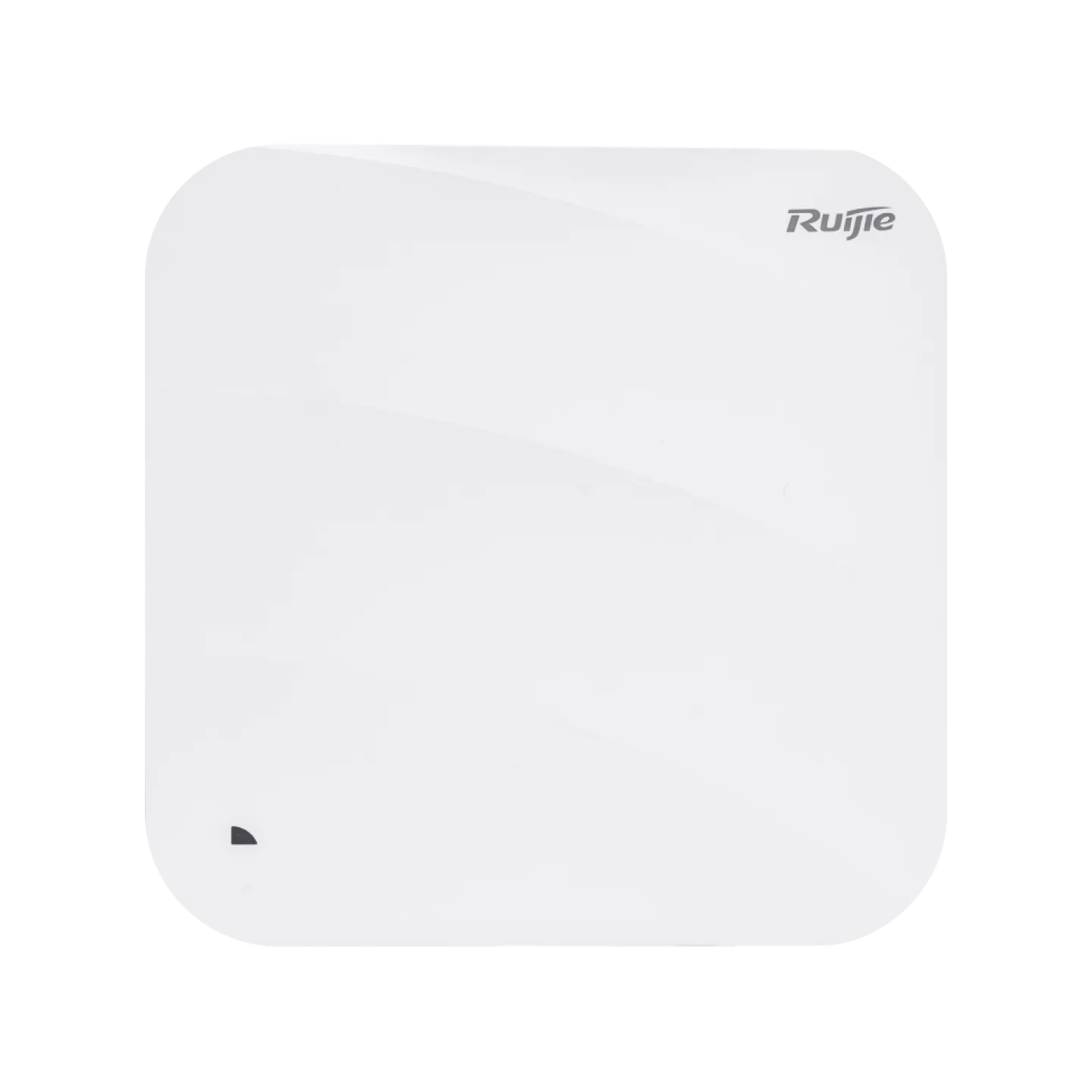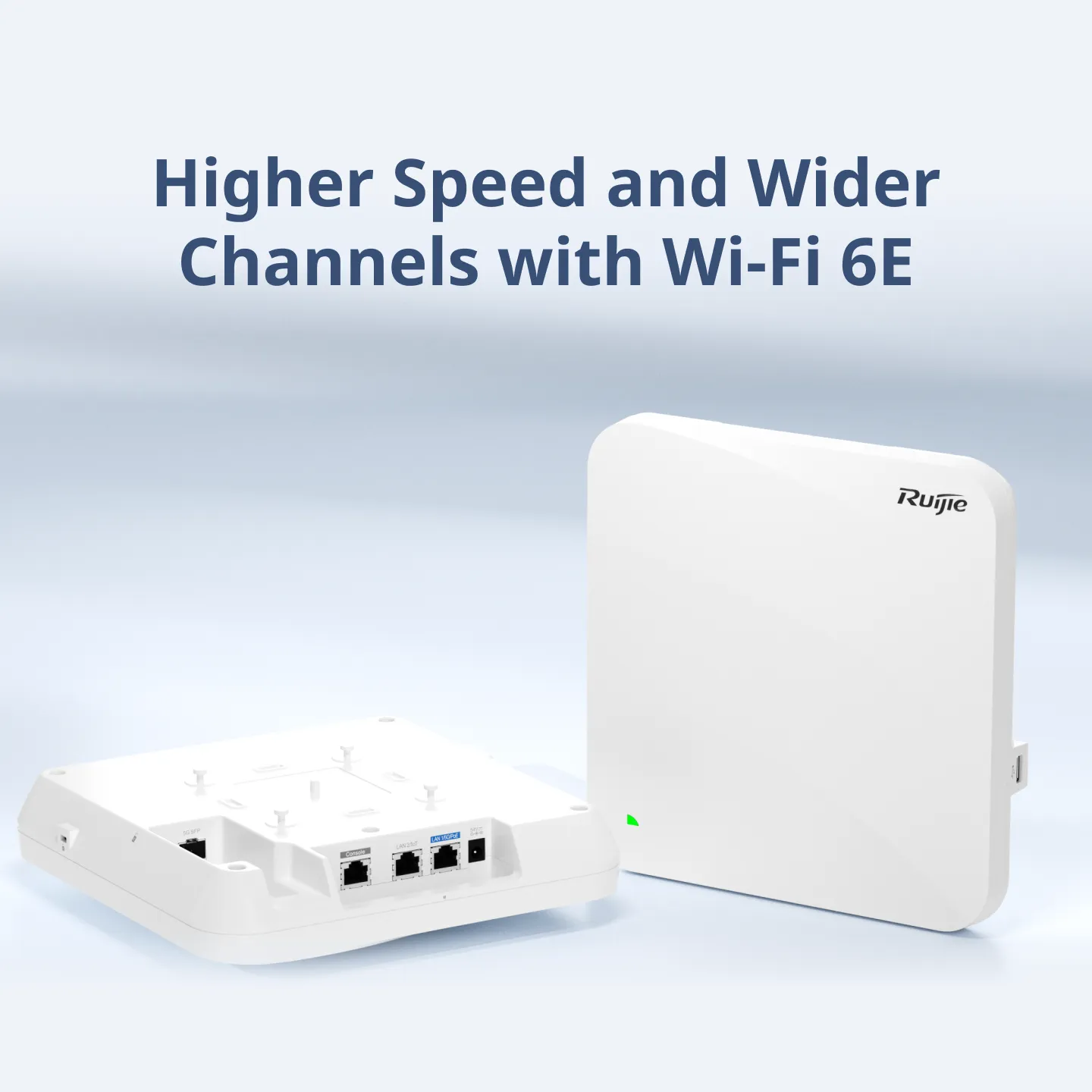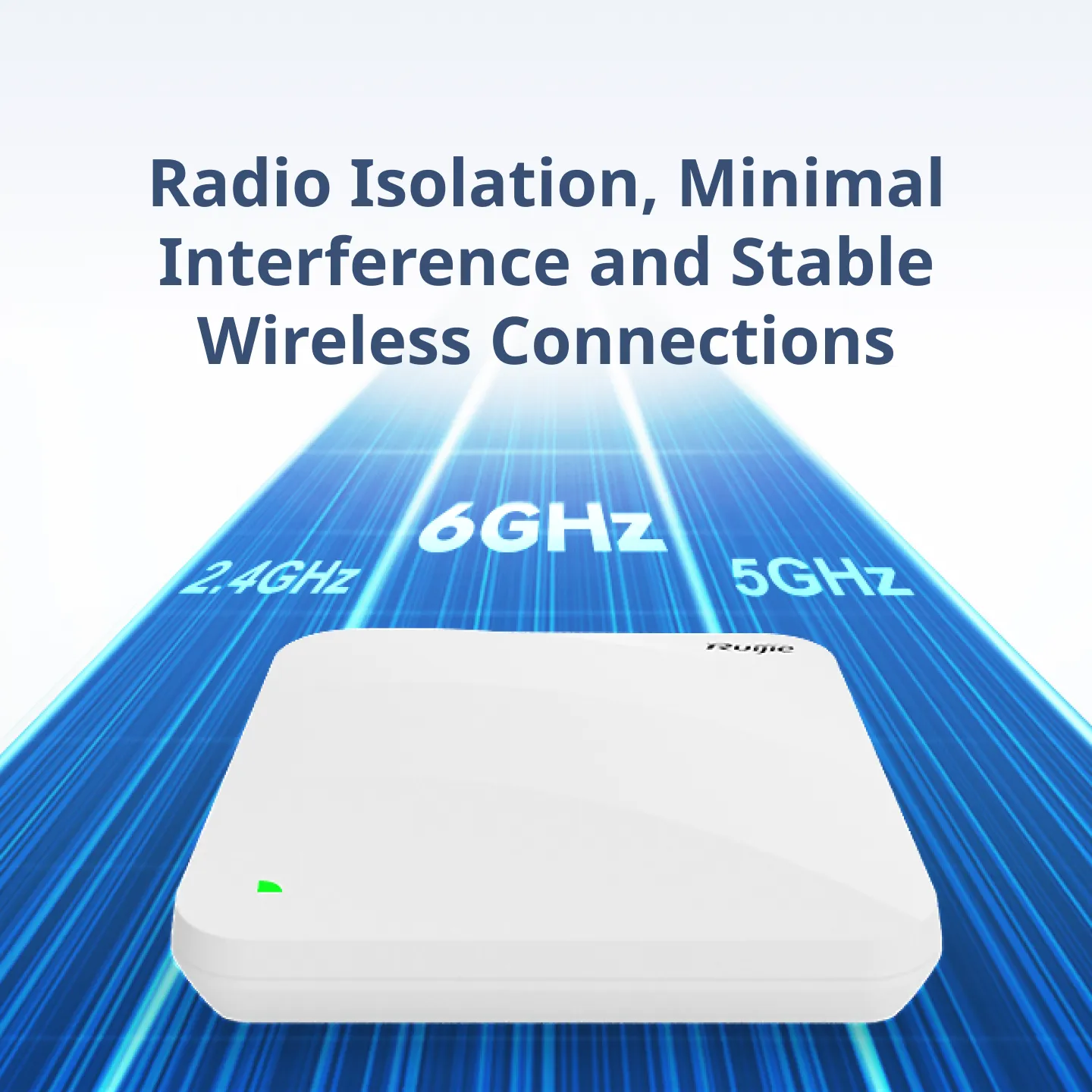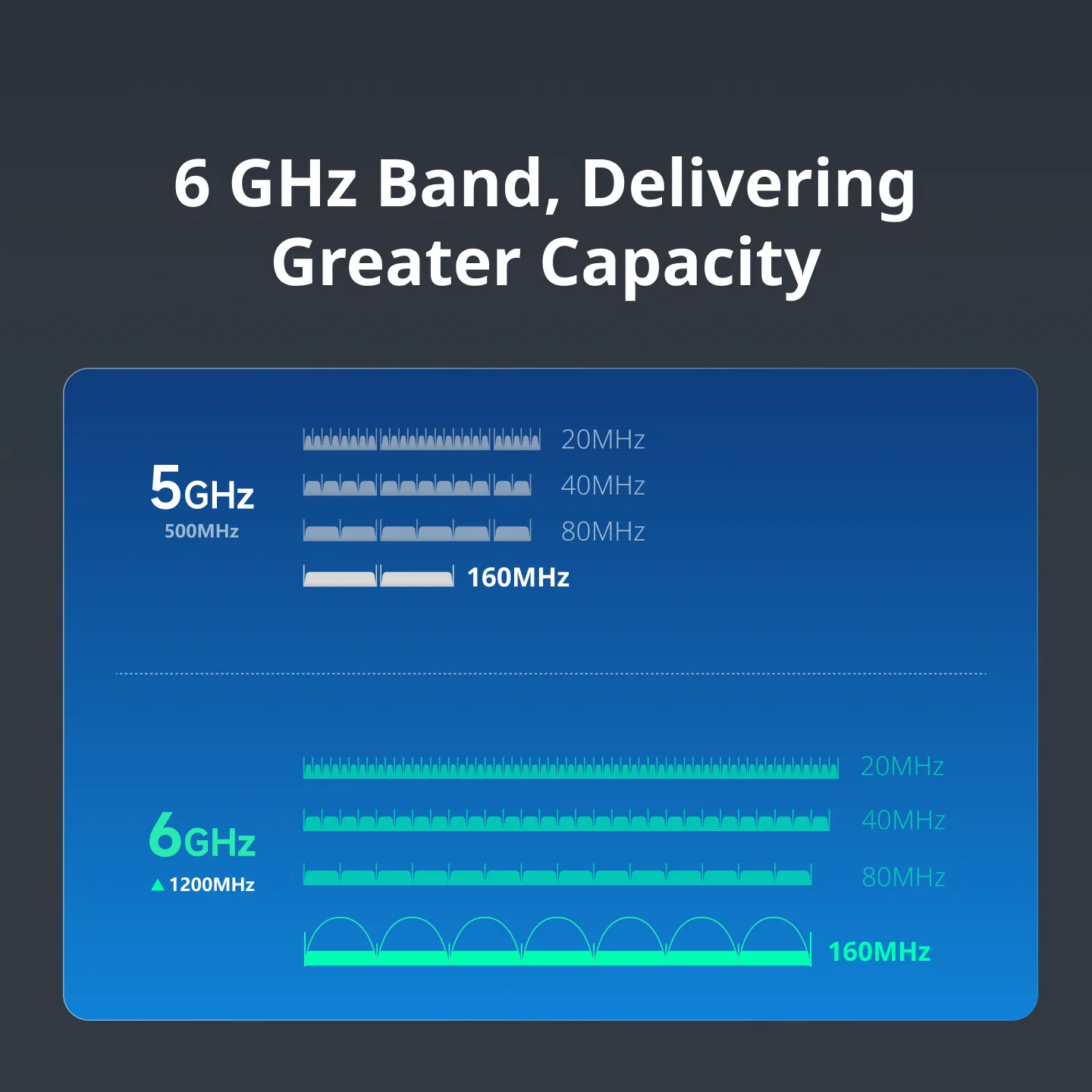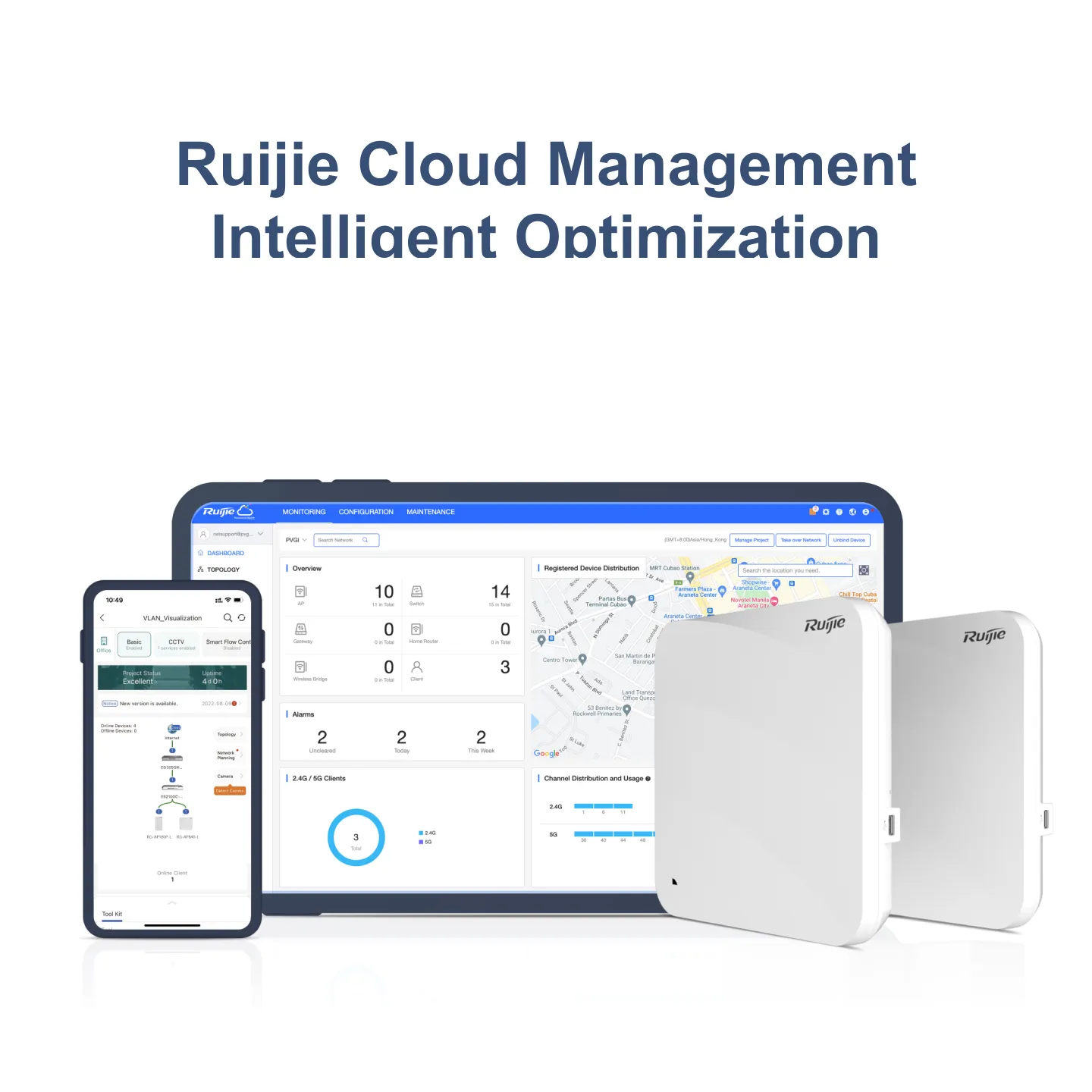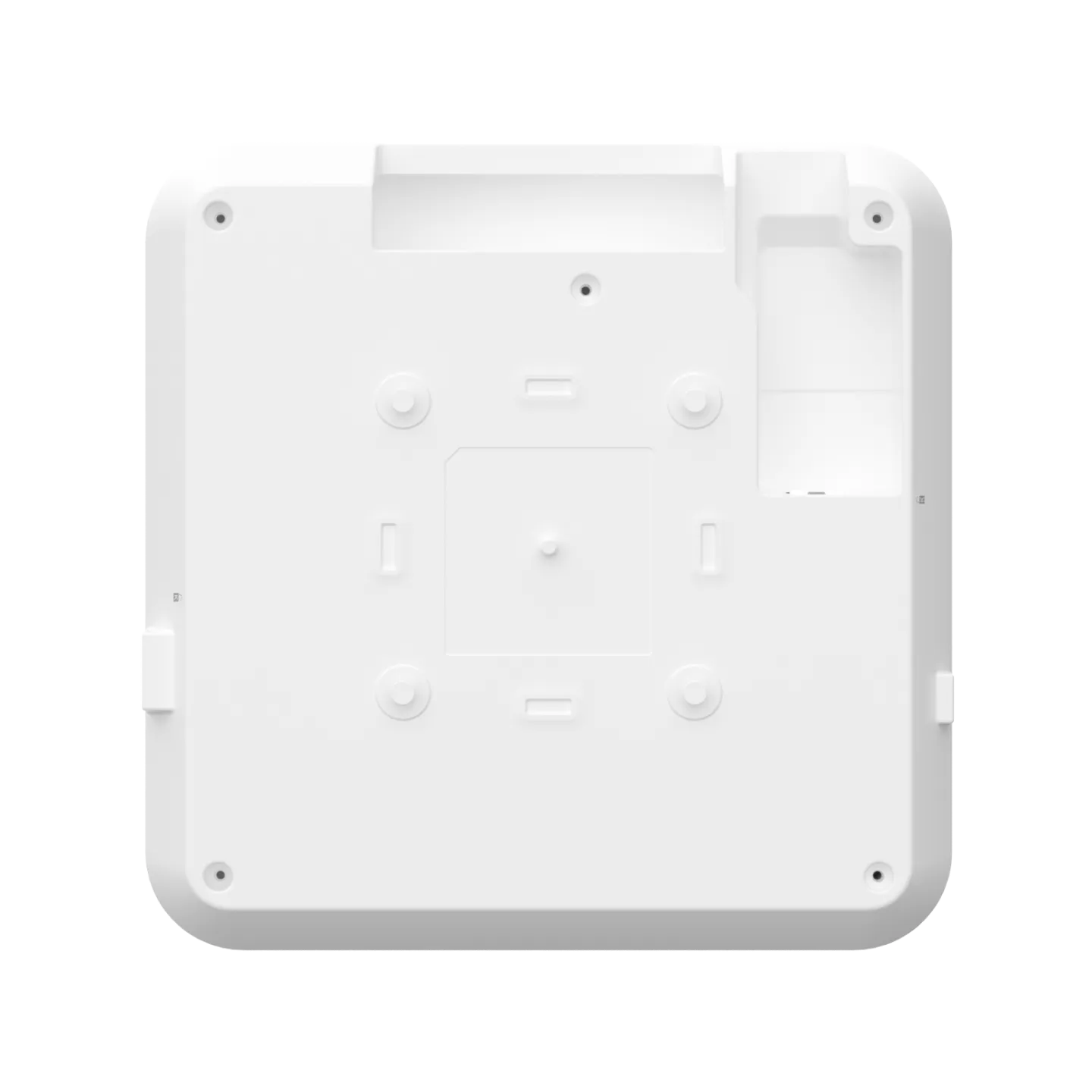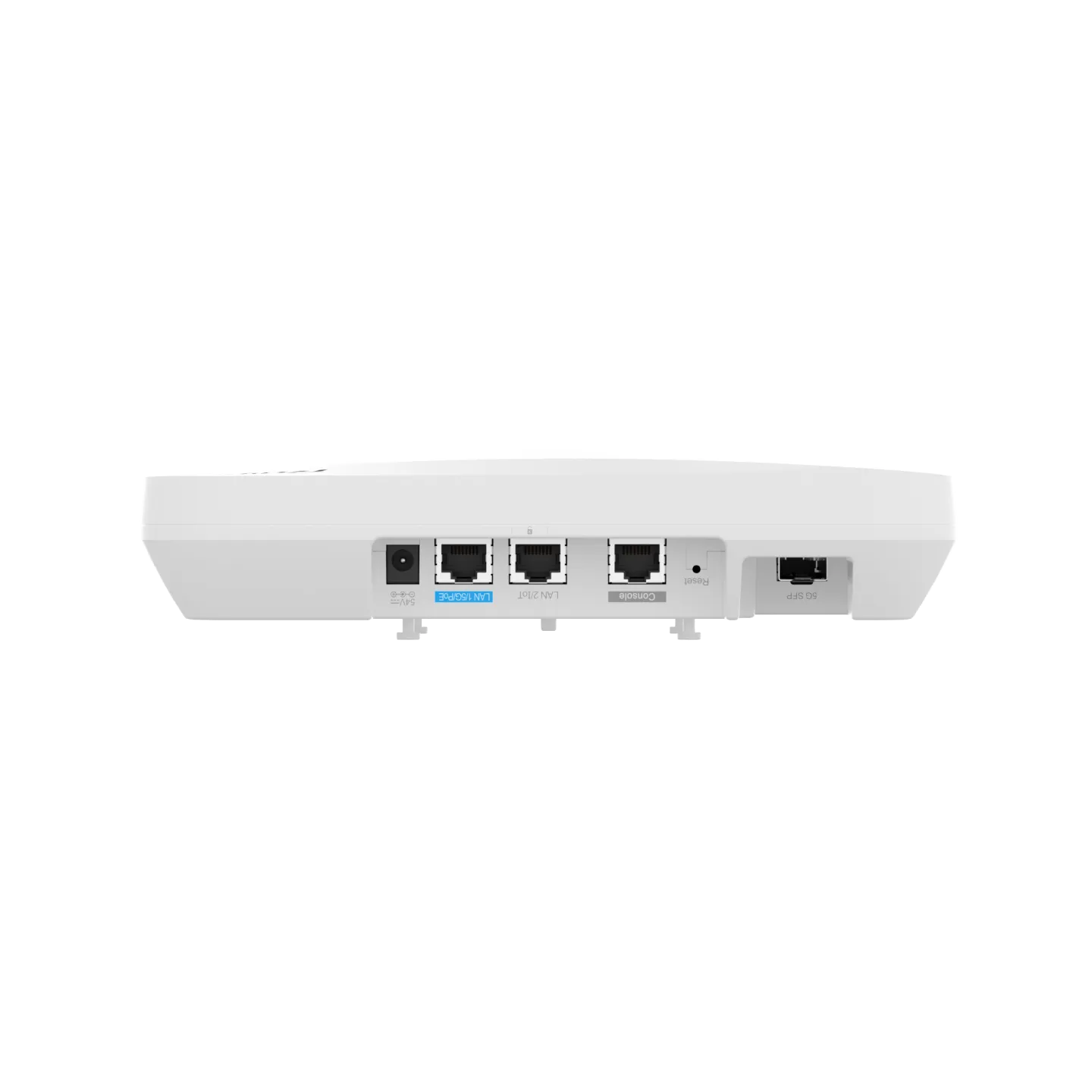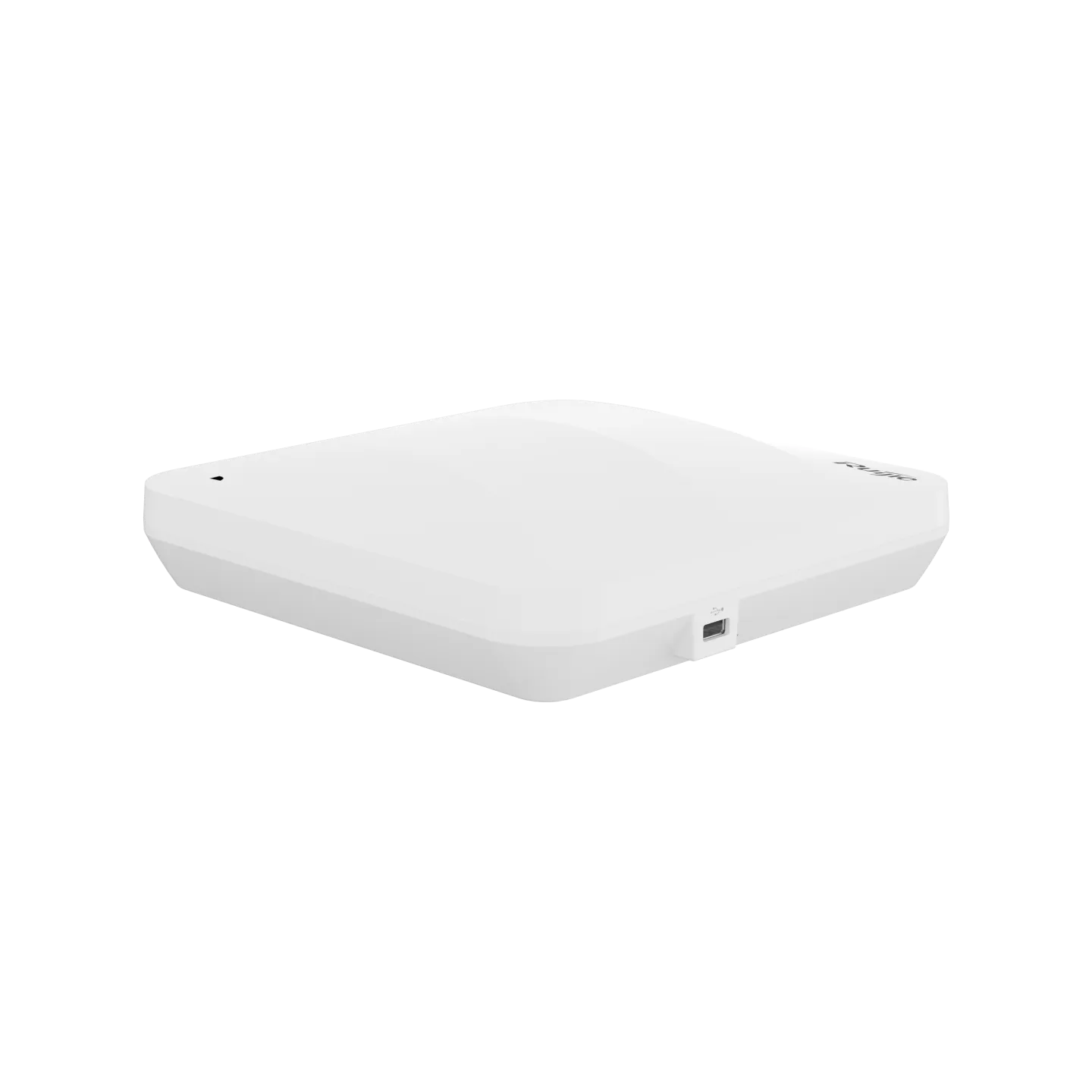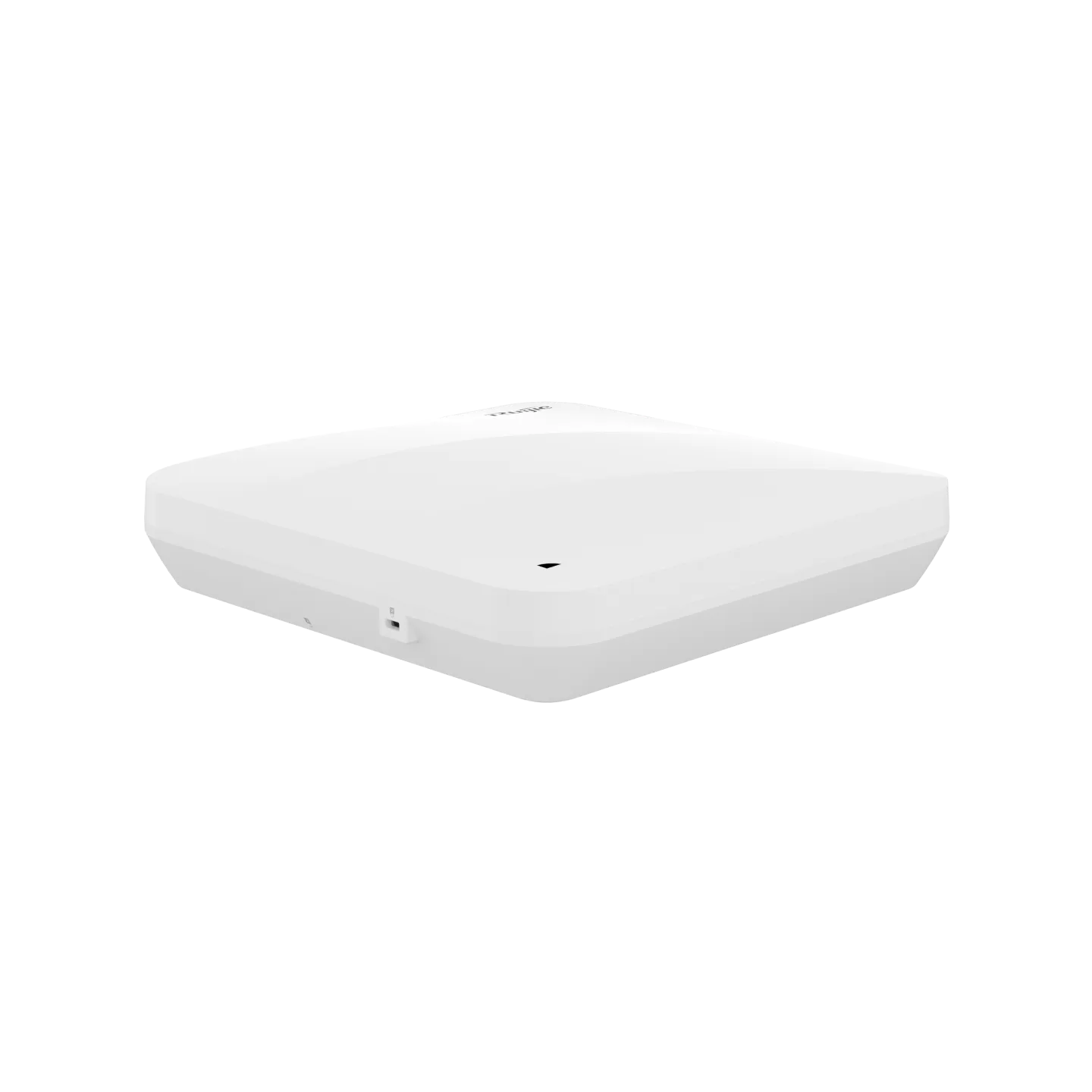Higher Speed and Wider Channels with Wi-Fi 6E
Indoor Access Point RG-AP880-L
Higher Speed and Wider Channels with Wi-Fi 6E
Wi-Fi 6E technology, supporting 6 GHz frequency band with wider spectrum resources and achieving fast and stable data transmission of up to 7.780 Gbps.
OFDMA and MU-MIMO technologies, supporting up to 100 concurrent clients
OFDMA and BSS Coloring technologies, reducing latency to 10 ms
WPA3 encryption, greatly improving wireless connection security
Target Wake Time (TWT) for reducing the service period (SP) of clients, saving 30% of energy.
Gbps
Radio Isolation, Minimal Interference and
Stable Wireless Connections
Tri-radio design, enabling independent operation in 2.4 GHz, 5 GHz, and 6 GHz bands while ensuring no interference between them.
Intelligent channel optimization and precise radio isolation, ensuring pure and stable signal transmission.
Intelligent optimization, enabling balanced connections, efficient bandwidth allocation, and superior network performance for each client.
6 GHz Band, Delivering Greater Capacity
6 GHz frequency band and smart antennas, providing uninterrupted signals upon client movement and intelligent signal strength adjustment, and achieving optimal signal coverage. OFDMA technology, allowing for efficient network connections even in high-density scenarios. Plug-and-play, enabling efficient and stable connections.
Cloud, Making Your Business Easy
